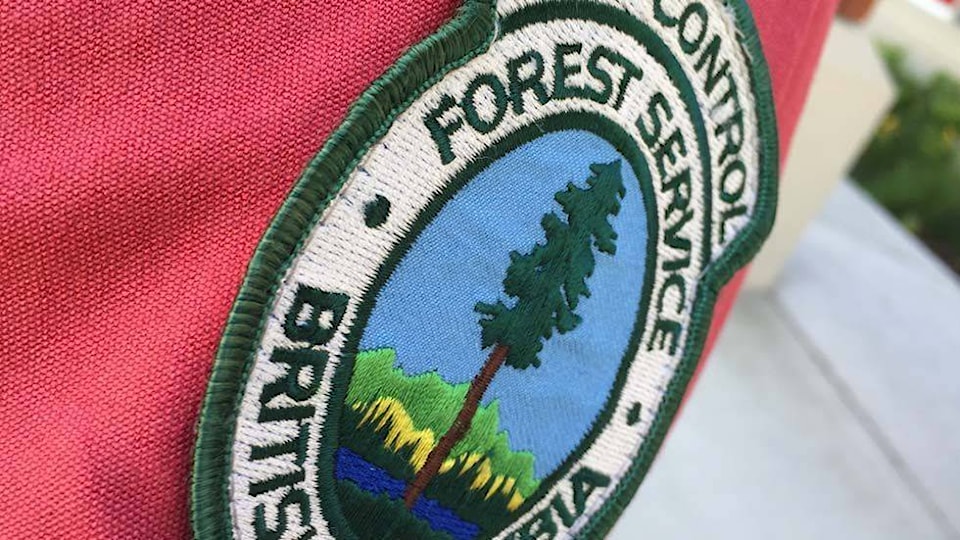Fires in B.C.’s southern Interior could be made worse by the warm temperatures and gusty winds forecasted for the region. Here in the Southeast Fire Centre, our wildfire season hasn’t been as bad as it is there, or even as bad as it was this time last year, but things could worsen due to this extended period of hot, dry weather.
According to some statistics from BC Wildfire Service fire information officer Carlee Kachman with the Southeast Fire Centre, we are in relatively better shape than we were this same time last year.
“This year 94 fires have burned 257 hectares, with 59 lightning caused fires and 35 that were human caused,” Kachman said. “Last year at this time 165 fires burned 5,505 hectares and of those 119 were lightning caused and 42 were human caused.”
The rainfall this area received, which was close to average across much of the Interior, throughout the early portion of the summer may have helped to delay the wildfire season from taking hold, but at least for the next upcoming week or so the forecast calls for highs to be near 30 or above, according to Environment Canada’s Kelowna-based meteorologist Doug Lundquist.
Currently the fire danger rating is mostly high in this region, with pockets of extreme and a small handful of moderate.
Another potential cause for concern for Lundquist is the risk of thunderstorms over the next couple of days.
“In the next couple of days I’m kind of a little bit concerned about the possibility for some isolated thundershowers, perhaps a risk of thundershowers, mainly in the mountains,” Lundquist said. “But it’s definitely another consideration.”
Although the storms may be isolated and the lightning will be accompanied by rain, there is still a risk of fire starts, as lightning doesn’t always strike directly under the rain shaft — if it strikes from the side of the clouds there is still some concern.
“Even if there is lightning and it does rain and it doesn’t rain enough it could kind of get things smouldering and then heat up,” Lundquist added.
Thunderstorms are usually accompanied by rain, another factor that drives wildfire behaviour, but because these storms will be isolated wind isn’t as much of a concern as it is yet, especially not to the extent it is in the southern Interior.
“The way it’s developing right now, the ridge of high pressure is pretty stable, so it’s not usually a windy situation, so once a ridge sets in we look for what might break it down and I can’t actually see the breakdown in the next week at least for now,” said Lundquist. He continued:
“At least through the weekend it looks like this ridge is building in, not withstanding the thunderstorms for the next couple of days, but it’s going to be fairly calm. Doesn’t mean there won’t be any winds and I don’t think it takes much to get things going and the fires themselves tend to create their own wind, that’s a different issue.”
Yet another concern for Environment Canada is the issue of air quality. Currently there is an air quality advisory issued for much of southern B.C. and Lundquist said that it is important to keep an eye on the air quality, as it can have negative implications for human health.
“Where I live it started out being very smoky here in Kelowna,” Lundquist said, “but with the wind turning north, well now it’s in Penticton and that’s really smoky, so even though a community might look decent one day, the other side of the valley is probably going to be smoky.”
The top priorities as it stands right now are the extended heat, the chance of thunderstorms, the clean air advisory and what is going to break down the current weather system.
“If this pattern happened in a situation where we didn’t have the fire risk we probably we wouldn’t even be chatting, it’s just pretty benign, hot, sunny and dry, there’s not a lot going on,” Lundquist said. “But because of the fires it’s a lot. So there’s not a lot to talk about until we start to see a cold front for some more active type weather moving in, but that’s not on the horizon.”
Kachman added that she and the rest of the team at the Southeast Fire Centre are watching the weather daily.
“Basically it’s just watching as systems are changing, moving out of our area and how much wind they’re producing and how much that wind is going to dry out the fine fuels and if there are lightning strikes if they’re in lower valley bottoms, how dry are those lower valley bottoms, what are the chances of starts, so we’re just watching all that.”
Currently there is no fire ban, but there is chance that could change, so it is important to monitor newsfeeds and the BC Wildfire Service website.
